Kersten Rettig: Portugal is Popular for Dallas Travelers
Portugal is the new destination darling. The small, western-most European country, known for its colorful azulejos, or ceramic blue tiles, that adorn commercial and residential buildings, palaces, and monuments, is all the rage right now. Instagram feeds are reeling with photos and videos of our friends and neighbors posing on the Pink Street, the Peña Palace, and the dramatic beaches of Algarve. Why?
Well, besides the fact that Portugal is wildly photogenic, it is still uncrowded and unburdened by massive tourism waves and cruise ships. Portugal is also relatively inexpensive as a European destination. As the westernmost country in Europe, it boasts a sprawling coastline of more than 580 miles, 16 islands in two archipelagos, and winding rivers and vineyards sprinkled throughout.
Historically, Portugal is influenced by Roman, Germanic, and Islamic occupations, which contributes to the beautiful tiles for which Lisbon, and much of Portugal, is known.
Does anyone visit Portugal for the history? Probably not. Rather, the draw is architectural amenities, seafood, port wine, and beaches. This summer, my husband and I treated our family to a week in Portugal, and we very efficiently covered a route between Lisbon and Porto.
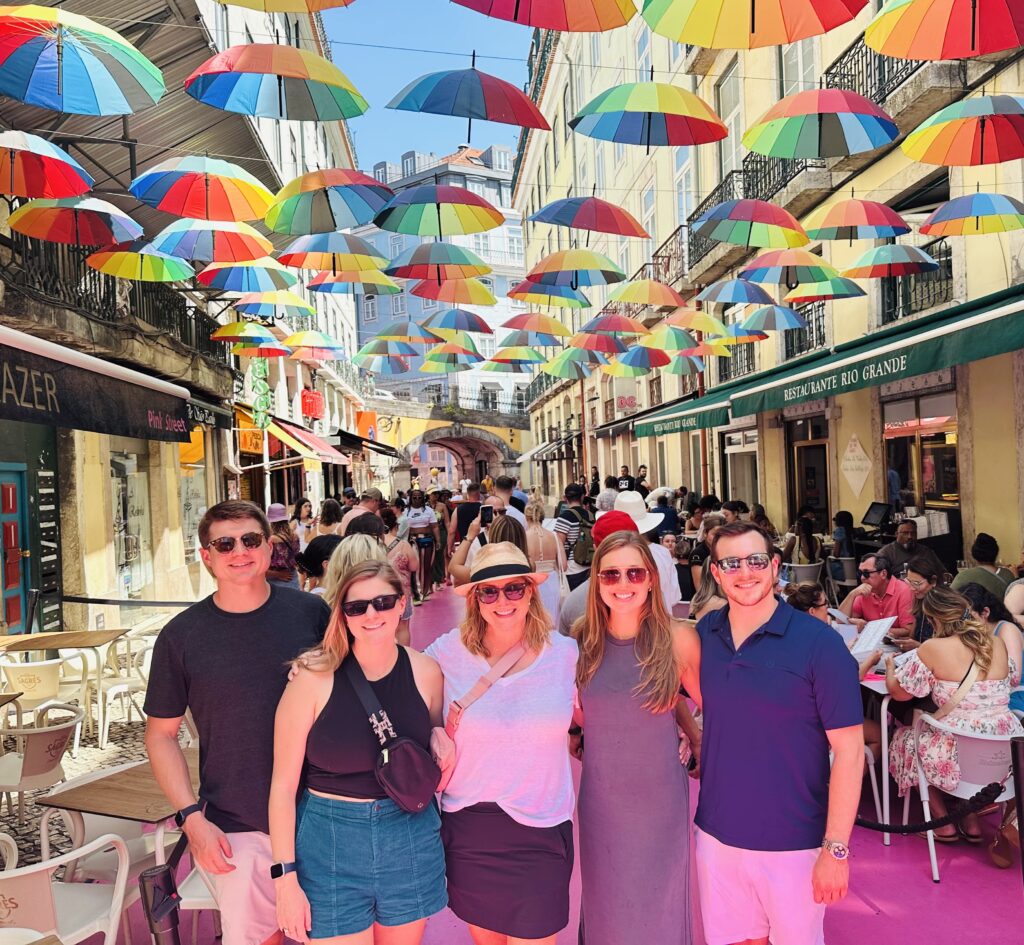
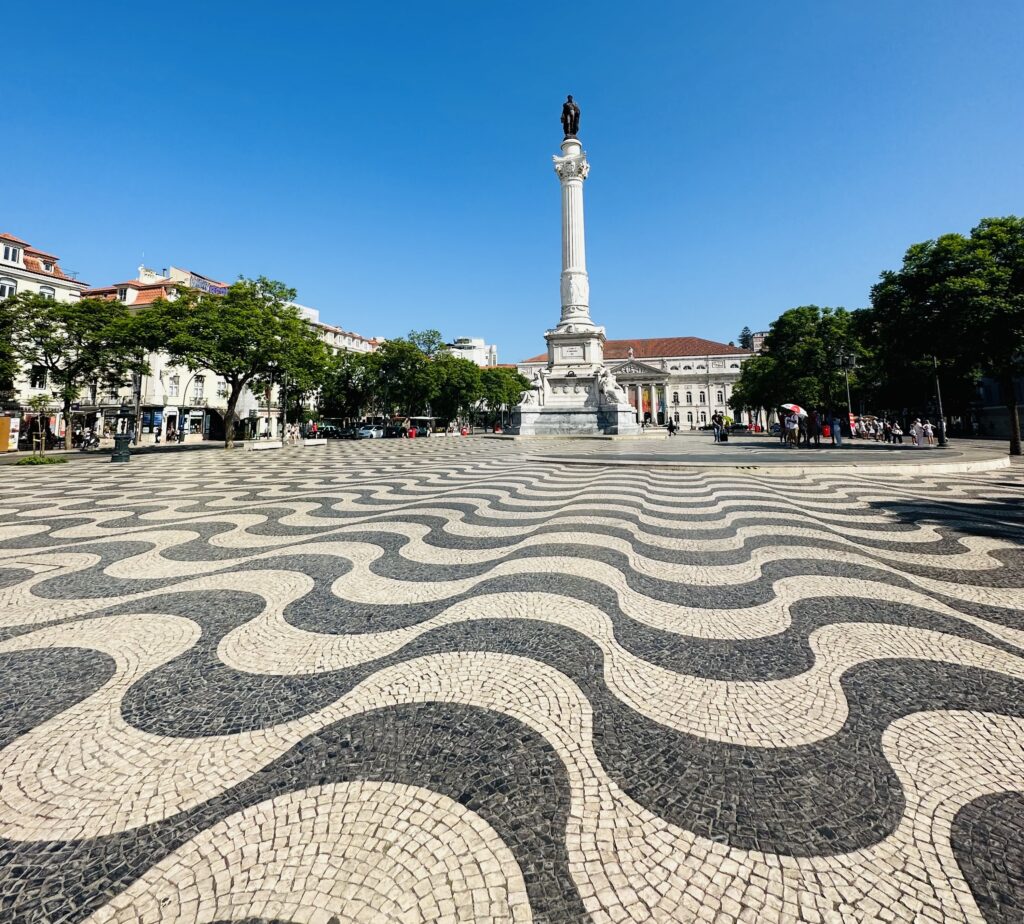
Lisbon
We started in Lisbon, the largest city in Portugal, and rented an AirBnb steps from the Praça do Comercio and Arca da Rua Augusta in Baixa. The location was central to dining and shopping, as well as attractions such as the St. Jorge Castle, the Pink Street, and miles of stunning black-and-white-tiled streets and sidewalks. Lisbon is hilly but walkable, though the tiled sidewalks get slick when they are wet. Sneakers are advised.
It’s such a beautiful city; it’s easy to simply admire the architecture and stroll alongside the Tagus River. There are several excellent museums to visit, including the Museu Banksy Lisbon, which features more than 100 reproductions of Banky’s works in an immersive setting; the Nacional Azulejos Museum, a history and collection of the gorgeous blue tiles; and the MAAT, the Museum of Art, Architecture, and Technology, the building of which is a work of art itself.
For attractions a little further out, such as Belem and Jerónimos Monastery, buses and trams are easy to use, and there’s always Uber. Many “Must-do in Lisbon” lists include riding the No. 28 tram. Our experience is that the trams were packed tighter than Portugal’s famous tinned sardines and just as smelly. Rather, walk, take a bus, tuk-tuk, or car to get around. Portugal’s train system is also a great way to get around, but I don’t recommend it to get to Sintra and the surrounding attractions.
Sintra
A short 30-minute drive from Lisbon is the magical town of Sintra. The strikingly colorful Peña Palace and the Quinta de Regaleria, with its spiral path to the underworld, are photographically famous. Lines are long, so I suggest booking a tourism platform such as Viator to buy a guided tour with transportation and skip-the-line tickets or hire a private driver to arrange tours. The town of Sintra offers restaurant options and bakeries with Sintra’s signature snack, the Travesseiro, a pillowy pastry filled with almond egg cream. Plan an entire day to explore this area.
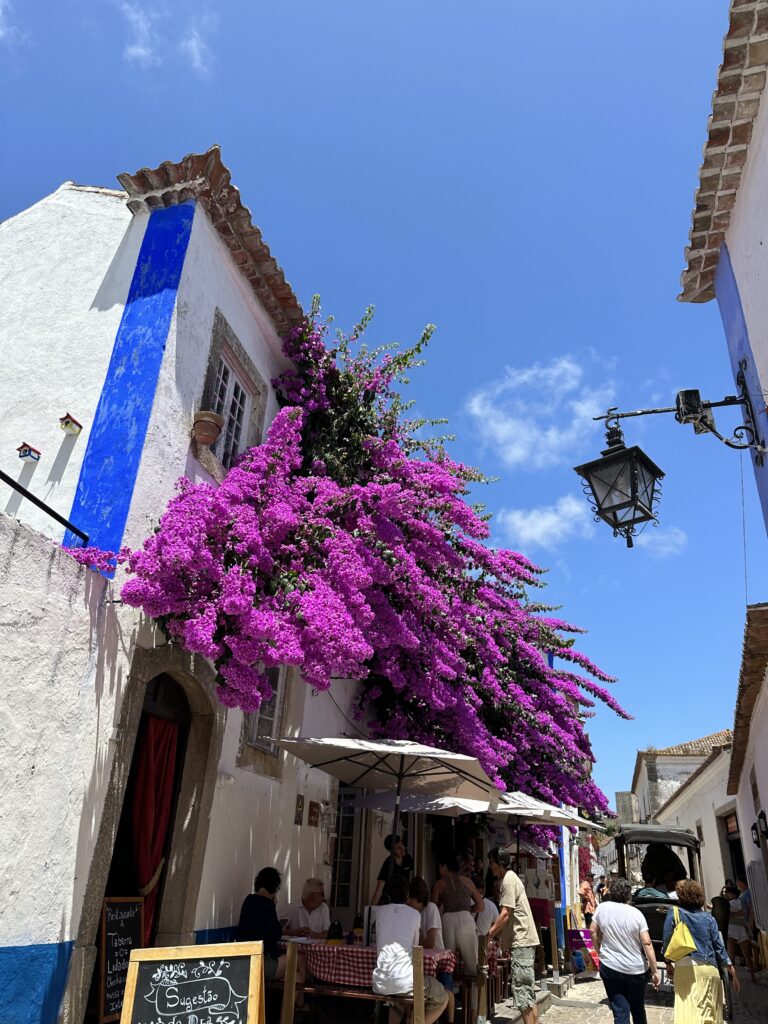
Small Town Charm
After three days in Lisbon, we rented a Mercedes van and headed towards Porto. We stopped in the medieval town of Óbidos, one of 17 UNESCO World Heritage Sites in Portugal. The white-wash city walls and cobblestone streets are punctuated with vibrant blue and yellow doors and a profusion of magenta bougainvillea. Óbidos is the home of Ginja, a delicious sour cherry liquor frequently served in chocolate cups sold in kiosks throughout the town for one euro per shot.
After lunch and exploring, we headed to Nazaré, where, in late fall and winter, some of the world’s tallest waves, some up to 100 feet high, draw surfers and spectators from the world over. In summer, it’s a sleepy beach town with few restaurants or attractions. Visitors can trek to a cliff that overlooks the Atlantic Ocean and houses a surfing museum.
Porto
Strategically located on the mouth of the Douro River that was used to send barrels of wine made in the Douro Valley to England-bound ships, Porto is a hilly, cobbled-stone street city with a handful of beautiful, historic places to visit. The Bolsa Palace, an opulent trade center that also currently serves as the home to Porto’s Chamber of Commerce and the Porto Cathedral, are both breathtaking destinations.
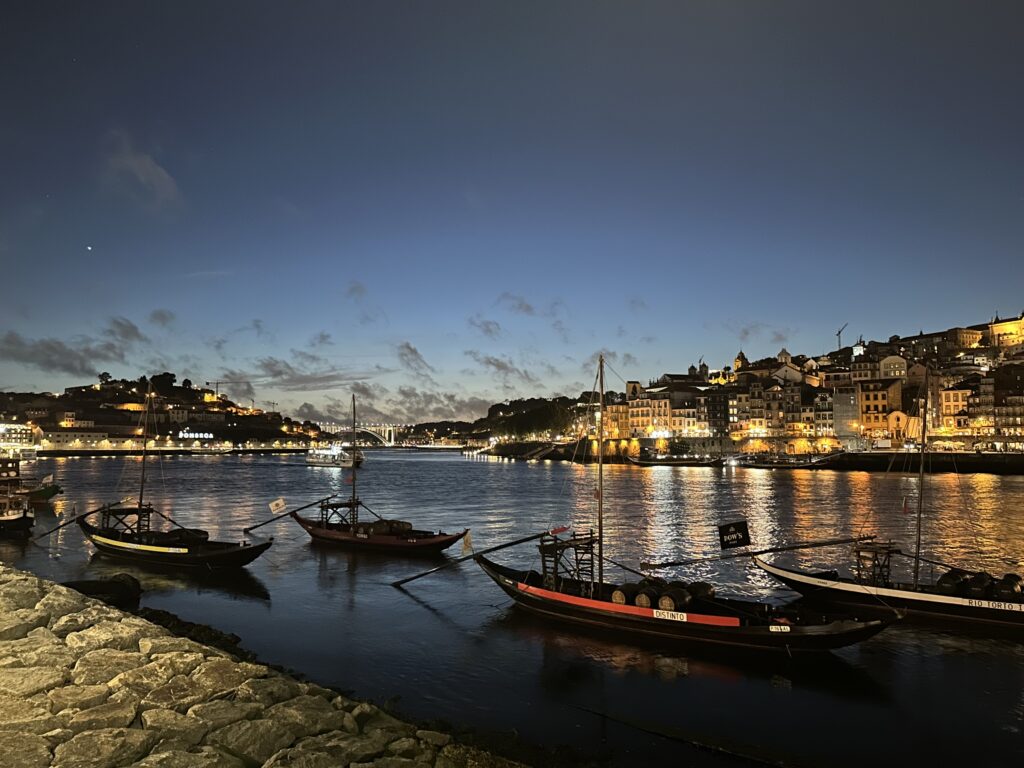
Vila Nova de Gaia, across the famous Dom Luis Bridge, which is passable by train, car, bike, and on foot, is the hub of the world’s Port industry. Port houses like Croft, Cockburn’s and Warre’s are concentrated between the riverwalk and a lush garden. Slightly quieter at night than Porto and the prime spot for views of Porto and the river, we chose to stay in Vila Nova de Gaia.
Douro Valley
Though it’s one of Portugal’s smaller by area wine regions, Douro Valley is probably best known for its port wine. Grapes from the region’s dramatic terraces are converted to ruby, tawny, and white fortified wines served at every bar and restaurant throughout Portugal.
We departed Vila Nova de Gaia for a guided private tour to Douro Valley from Douro Exclusive that includes stops at a still winery, lunch at the magnificent Casa Do Arco, a Rabelo river tour, and a port winery tour. The Douro Valley is also accessible by riverboat, train, private car, or with larger tour groups. It’s a minimal time commitment of 10 hours to experience it as we did, but, as a family of oenophiles and food lovers, it was well worth it.
Though Porto has a large airport, our flights were booked in and out of Lisbon, so after three nights in Porto, we headed back to Lisbon.
Cascais
Known as the Portuguese Riviera, Cascais is a luxe beach town with upscale lodging, shopping, fabulous restaurants, nightlife, and lots of yachts. Worth a stop if only to eat lunch at Marisco na Praça in the marina district, though there are other things worth exploring there as well. There are castles and villas to visit as the Portuguese nobility summered in Cascais.
In eight days, we covered a lot of a tiny country. There is so much more to explore, especially the dramatic beaches of Algarve and the tropical Azores. We will definitely return.
Portugal is on the tourism radar screen, with travel magazines and celebrities touting it as the next hot destination. Even Central Market is on the Portugal bandwagon, launching their annual foodie festival, Passaporte Portugal, on Sept. 13, so you can taste the best of Portugal before you go. Which if you do, here are some tips:
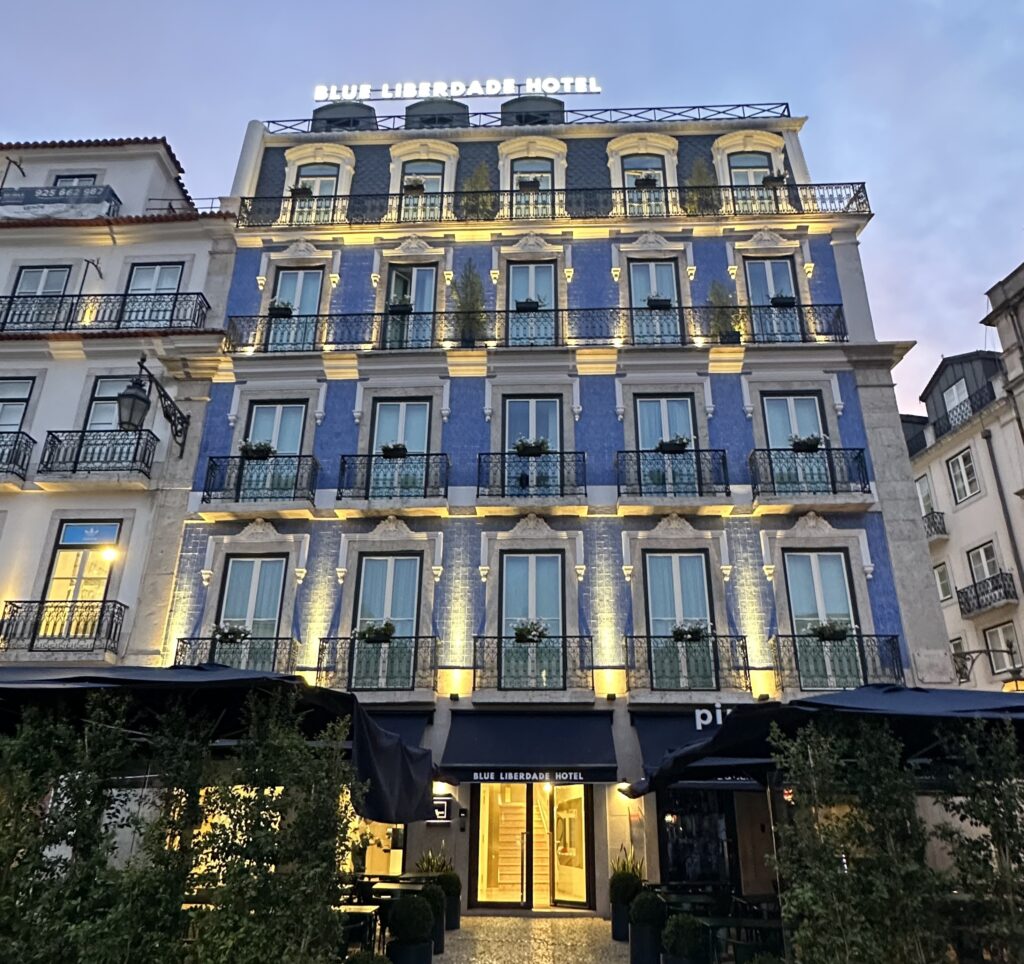
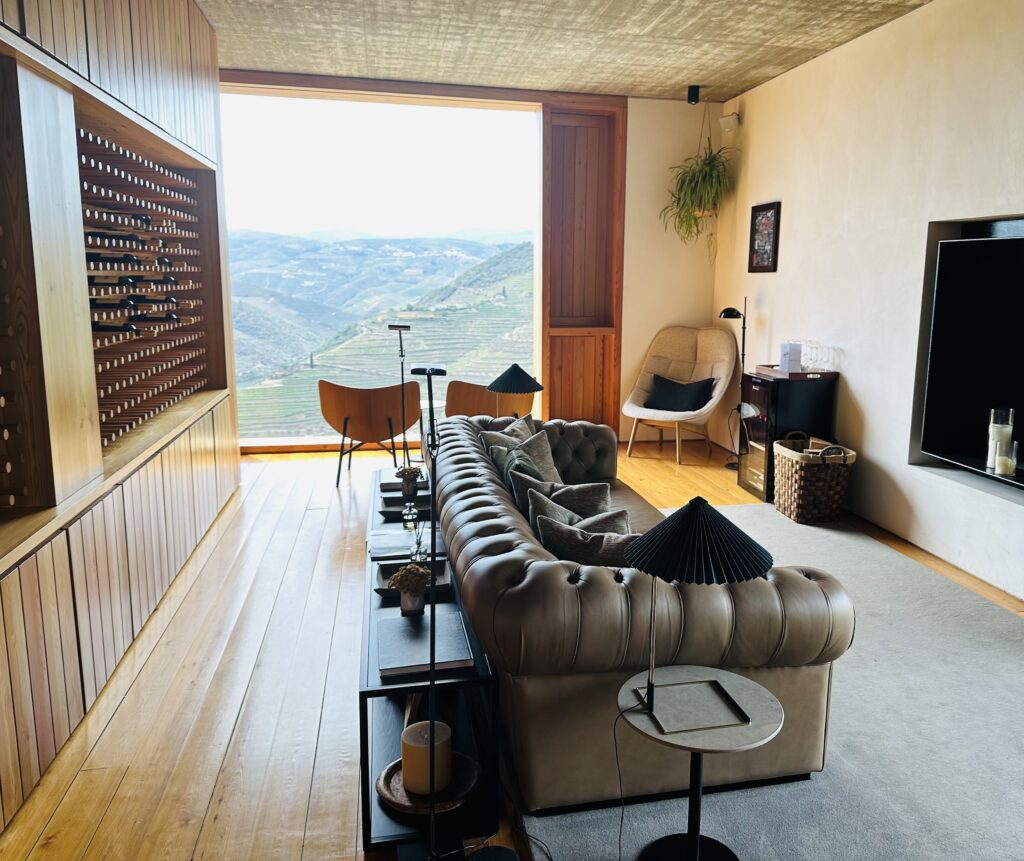
Lodging Tips
Lisbon has plenty of lodging; the pro tip is to stay in the right part of town. Baixa and Bairro Alto, are safe, clean, and centrally located to attractions and great food. For luxury, The Ivens is lovely. More moderately priced and located steps from luxury shopping, Blue Liberdade Hotel is perfect. Lisbon is also teeming with short-term rentals.
Vila Nova De Gaia has luxury options, including The Lodge Hotel and the Yeatman. The Lodge was perfect: gorgeous, with an exceptional in-house restaurant and the best views of Porto and the river. If you plan to spend the night in Douro Valley, look no further than Casa Do Arco, a spectacular small hotel perfectly situated among the vineyards.
The Food
First, heads up. Every restaurant we dined in greeted us warmly with baskets of bread, cheese, olives, octopus salad, etc., and no explanation of their provenance. Here’s the deal; this isn’t free-chips-and- salsa-land. The snacks placed on your table, with or without your request, cost up to €7 per person. If you touch them, they are yours. If you immediately say you don’t want them, they will be removed, and you don’t pay.
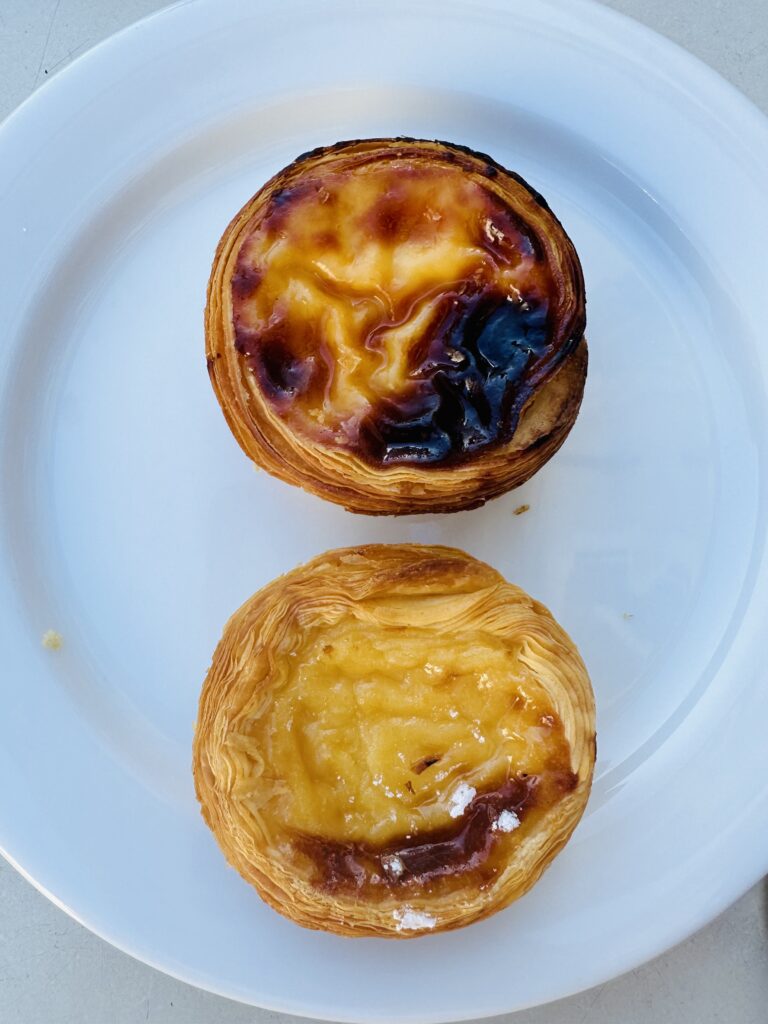
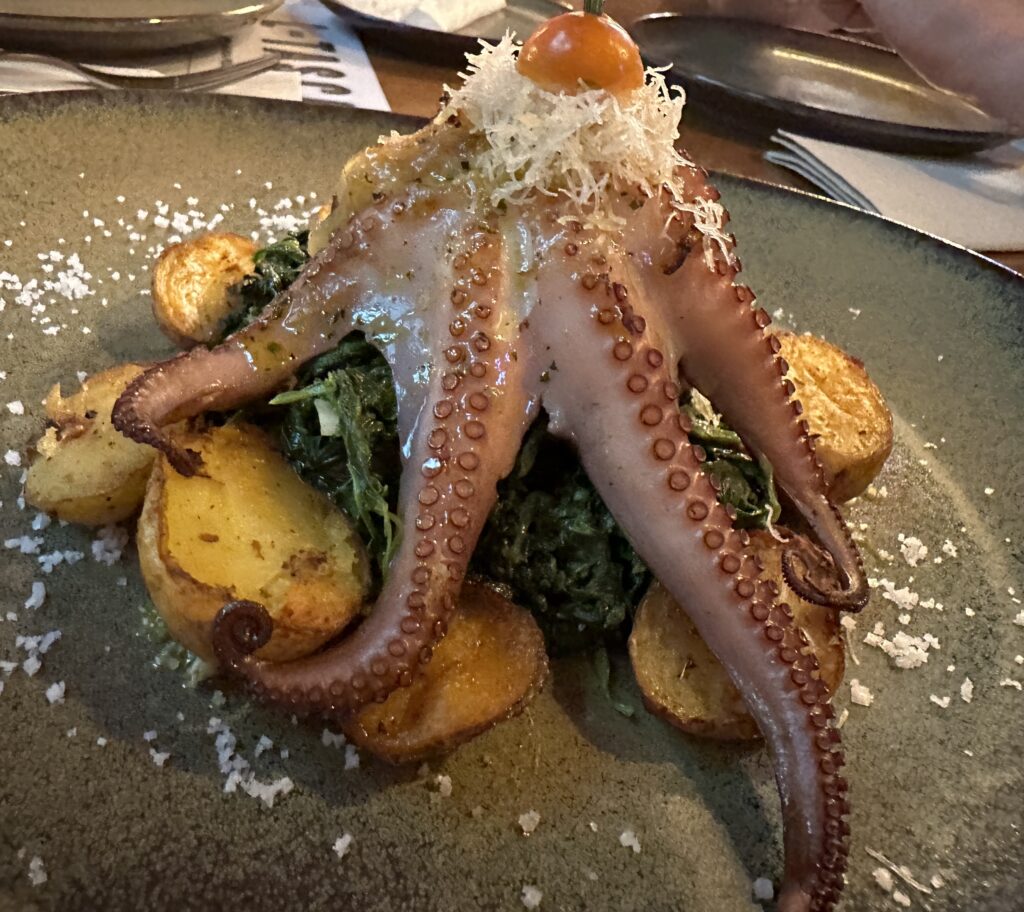
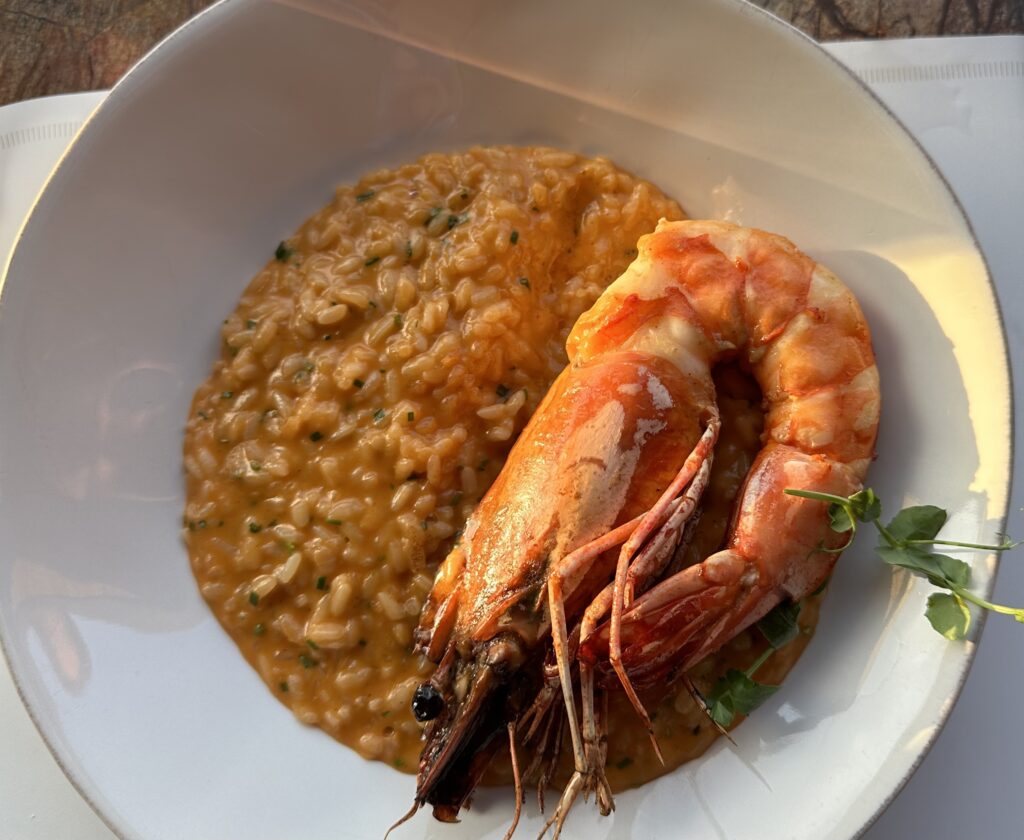
In Lisbon, you must have Pastel de Nata, the quintessential Portuguese pastry. You can find them everywhere, but Confeitaria Nacional and Pasteis de Belem are among the best. Seafood is plentiful and extremely fresh throughout Portugal, so I’m not sure why they continue to eat Bacalhau, a cake made of dry, salted cod fish. Nevertheless, it’s the national dish, it’s everywhere, and it’s pretty good. Another local delicacy is barnacles, which we reluctantly ate at Cervejaria Ramiro, a low-key but amazing seafood restaurant made famous by Anthony Bourdain’s endorsement.
Portugal is home to 28 Michelin-ranked restaurants, and we dined at one of them, Eleven, which was culinary theater at its best. More impressive, though, were meals in local restaurants or tascas, such as L-Tasca and A Tasca do Chico. Many foodies flock to Time Out Market Lisbon, an expansive food hall with dozens of different stalls. We visited the market for lunch, which was a very loud, hot, three-hour time out. Time Out Market tends to be jam-packed, so it takes a long time to find a table and get food. I wouldn’t make that a priority.
If your travel plans include Portugal, you will find countless blogs and Instagram accounts that showcase this incredible destination. I relied on many of them to plan this trip and found that, surprise! The reality of these places is different from the Instagram version. The reality isn’t filtered or photoshopped. It’s better. It’s filled with the smell of the ocean, the roar of the waves, the sweetness of pastries baking and the beautiful but haunting sounds of Fado escaping from apartment windows open so laundry lines can stretch between buildings.
Obrigada, Portugal, eu voltarei.

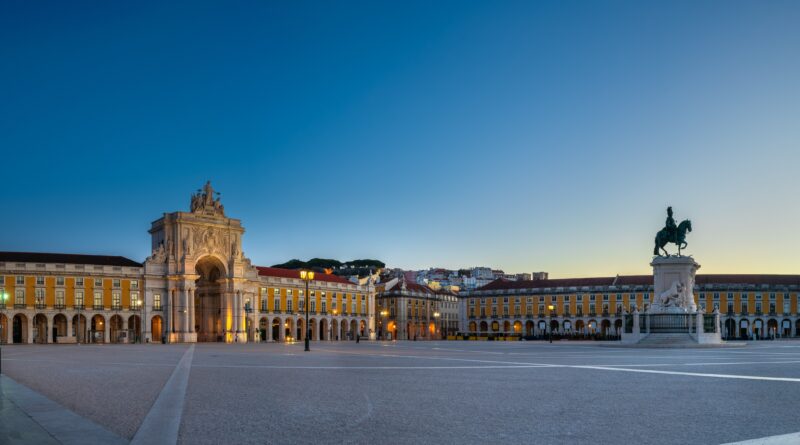








Kersten,
Another terrific article! Jamey and I are going later this month and will use your ideas like a roadmap! Thank you, Pressley